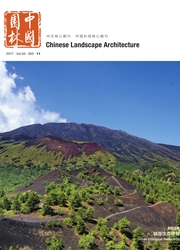

 中文摘要:
中文摘要:
城市公园绿地作为减缓城市热岛效应的重要手段已被广泛接受,然而由于其影响因素繁多,研究方法不一,导致其影响机制仍缺少深入研究.通过梳理当前主要的3种研究方法:地面监测研究、遥感与地理信息系统分析研究和数值模拟研究,分析其优缺点以及在不同尺度上的适宜性,认为随着数值模型计算能力和精度的提高,结合地面实测数据验证的数值模型将成为中小尺度上城市公园冷岛效应研究的主要方向,而基于遥感和地理信息系统的分析模型更适宜于景观尺度上的研究,但应加入对公园外部空间格局及局部气候的考虑,以达到提高公园生态效益、减缓城市热岛、改善城市环境的目的.
 英文摘要:
英文摘要:
Urban park has been widely accepted as one important space of ameliorating urban heat island. However, due to the complexityof effect factors, and different research methods, the impact mechanism of park cool island still lacks depth research. This paper comparedcurrent three main methods: field observation, remote sensing and GIS analysis, and numerical simulation to assess their advantage anddisadvantage. Results suggest that with improving of model calculation capacity and precision, numerical simulation model combinedground measured data validation, will become the main research subject of park cool island at small scale. Statistical model based on remotesensing and GIS should take the nearby space and climate environment into consideration for getting the best ecological effects, mitigatingurban heat island and improving the urban environment.
 同期刊论文项目
同期刊论文项目
 同项目期刊论文
同项目期刊论文
 期刊信息
期刊信息
